When I was in my 20s, I would occasionally have an especially deep meditation session. Whenever this happened, I’d always wish I could extend it.
If it lasted an hour, I’d wish it could last for two hours.
If it went for two hours, I’d wish it could go for four.
Always, in the back of my mind, I wished I could hold my meditation feelings 24/7, for if I could do that, I thought, life would be perfect.
But my meditation feelings typically faded fast, and soon, all that remained was a worrying doubt that I might never regain them again.

For what if I couldn't recapture those feelings the next time I meditated?
What if my great meditation session was a one-off?
These thoughts filled me with stress, and they would always nibble away at me the next time I sat down to meditate.
Unsurprisingly, I seldom recaptured the meditation magic of my previous session.
And I see a similar thing happen with many of my Reiki students.
If they feel the perceived quality of their practice either plateau or decline, anxiety sets in.
That is when they write to tell me how they can’t feel as much energy as they once did, how they feel less settled than before, how this, that, and the other thing.
But what I eventually learned – and what I share with them – is that fluctuating energy is nothing to worry about.
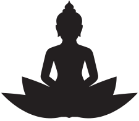
Things will always change. It’s built into the fabric of life. It’s the way things are.
Think of the four seasons.
Think of how we age.
Think of the vegetables in your fridge that are right now growing old and mushy.
Think of – well, you get my drift. This is a concept you’re certainly familiar with.
Life, as Buddha told us, is impermanent.
Or as Heraclitus famously said, “One cannot step twice into the same river.”
So the question is: Why should Reiki be an exception?
Why should Reiki be the one thing in life that remains constant?
Understanding this point is a relief because it frees us from obsessing over the temporary fluctuations in our practice.
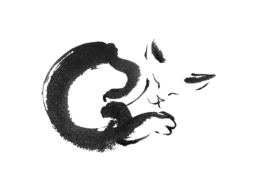
Yes, some days will be great and others not so great, but if we know this in advance, we can at least relax about the process.
A bad day doesn’t mean our Reiki is ruined forevermore.
Rather, it’s just following the natural ebb and flow of life.
Perhaps our system is doing a bit of processing.
Perhaps the clients we worked on today are less receptive.
Perhaps we’re working through some deep issues that are keeping us energetically numb.
So many things could be influencing our Reiki results, and many of them actually indicate that we are going through shifts — shifts that show our practice is progressing, that we are doing deep work.
And often, this work isn't physical. We are healing non-physical layers of our being, and as a result, we won't feel it as physically.
And yet, this doesn't mean that nothing is happening. It doesn't even mean that we won't experience dramatic results later on.
It's just that often it takes time to perceive these results.
We work on the non-physical, and need to wait for the changes to flow down into the psychological, emotional, and physical aspects of our being.

An excellent way to stop worrying about your Reiki ups and downs is to evaluate your progress by using a moving average.
In other words, instead of judging yourself by individual results – or a small group of results – see your practice from a broader perspective (e.g., the average result over, say, the last 30 days).
Think of the Australian dollar. It might be bullish, but on any given day, it can easily drop a cent or two.
Shown on a graph, the dollar might zigzag all over the place, but over time it will nevertheless move higher.
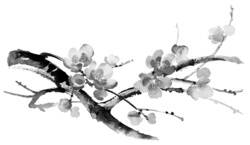
So to understand what’s really going on, we focus on the trend, rather than a single snapshot in time.
This gives us a more balanced view of the situation, and it will very often take the angst out of our practice.
We will understand that overall things are actually going well for us, and that ultimately it doesn't matter so much what happens on any individual day.
If we are making progress overall, if, on average, we are happier this month than last month, then life is good.
Thinking like this takes a lot of the pressure off, and, as a result, usually improves our practice.
We can relax more and just let things flow as they're meant to flow.
We're not futilely trying to keep things stable and fixed.

Not battling against the natural movement of the universe.
Ultimately, with experience, we'll get better at simply practising Reiki without worrying about results, because the more we focus on them, the more we’ll get in our own way.What’s more, the more we focus on results, the more stressed and frustrated we will inevitably become the moment it looks like these results won't go our way.
But if we can just focus on the process, on doing our practice without worrying about results, then almost certainly, over time, things will improve.
Of course, it can be hard not to worry or even panic if we feel that we're losing our Reiki touch.
But ultimately, we should treat our personal practice the same as we treat our Reiki work on others.
For when you work on someone else, your sole job is to channel the Reiki.
That's it.
You get out of the way, you let the Reiki flow, and you leave the result in the hands of the metaphorical gods.

Sometimes the person you give Reiki to will be blown away.
Sometimes they'll only feel mildly relaxed.
You can't control how they feel. You can only control what you do. And your job is simply to give Reiki, and nothing else.
And that's also how it should be when we work on ourselves. We meditate or give ourselves Reiki, and that's that.
We simply do our part, which is to practise to the best of our ability, and after that, the result isn’t our concern.
Some days we'll experience wonders.
Other days, we might not feel much.
But if we're consistent and diligent with our practice, then on average, the trend will be our friend.
So take your focus off the result.
Practise consistently. And simply go with the flow.
Do that, and more often than not, you'll be transported to beautiful places.
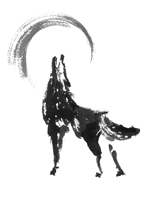
For millennia, the hara has helped people in all walks of life to feel calmer, more centered, and energetically charged.
And today, in an increasingly busy world full of distractions, we likely need the hara’s energy more than ever.
Due to the grounding nature of ‘haric’ energy, it is robust enough to help us stay centered even under duress, and with practice, maintaining a connection to it only requires minimal effort. And that means we can stay anchored in its energy, even as we work, rest, and play.
It is therefore an ideal tool to help us bridge the gap between the ‘spiritual’ and the ‘non-spiritual’.
It's a way to stay plugged into our spiritual side even as we go about our regular day.
So let’s learn from the many traditions that emphasize the value of the hara.
Let’s meditate on it.
Let’s strengthen it.
And then let's enjoy the energy, harmony, and balance it bestows on our life.
— Article by Om Reiki Founder, Jeremy O'Carroll
Reiki 1 (Melbourne) · Reiki 1 (Brisbane) · Reiki 2 (Melbourne) · Reiki Master (Melbourne) · Daylesford Courses · Meditation Courses · Chi Activation Courses · Pellowah Courses



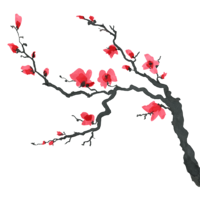



Sign up for our weekly Reiki newsletter and receive '18 Things You Need to Know About Reiki' for free.
If you’re looking to take a Reiki course, you need to read this ebook first!
Learn the critical mistakes prospective students make. Ensure you find the course that best suits your needs.
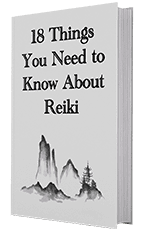


© 2025 Om Reiki Centre. All Rights Reserved.